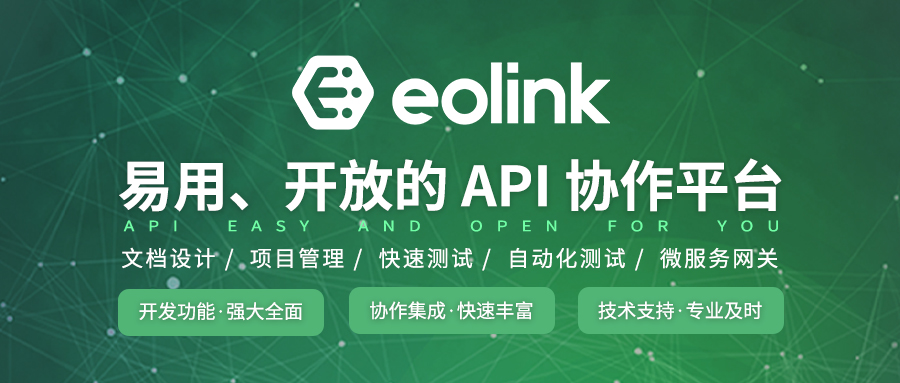多平台统一管理软件接口,如何实现多平台统一管理软件接口
332
2023-02-28

Spring实例化bean过程解析及完整代码示例
提出问题
Spring中Bean的实例化是Bean生命周期的一个重要环节,通常Bean初始化后将不再改变。
那么Spring实例Bean的过程到底是怎么样的呢?!
Spring实例化bean过程分析
要想获取到一个bean对象,得先通过BeanFactory的getBean()方法获取,期间会经过一系列步骤来实例化这个bean对象:
第一步:调用Bean的默认构造方法(当然也可以是指定的其它构造方法),生成bean实例:bean1。
第二步:检查Bean配置文件中是否注入了Bean的属性值,如果有注入,则在bean1实例的基础上对其属性进行注入,把原来的bean1给覆盖掉形成新的bean实例:bean2。
第三步:检查Bean是否实现了InitializingBean接口,如果实现了此接口,则调用afterPropertiesSet()方法对bean2进行相应操作后,把bean2覆盖形成新的bean实例:bean3。
第四步:检查Bean配置文件中是否指定了init-method此属性,如果已指定,则调用此属性对应方法并对bean3进行相应操作后,最终把bean3覆盖形成新的实例:bean4。
通过上面的步骤我们发现,Spring实例一个bean时,这个bean是在不断的变化的!
Spring实例化bean过程代码演示
为了更好的说明以上步骤,请看下面代码:
实体类:
/**
* 实体类
*/
public class Employee implements InitializingBean, DisposableBean, BeanNameAware {
private String id;
// 员工编号
private String name;
// 员工姓名
private String sex;
// 员工性别
private String age;
// 员工年龄
private String nativePlace;
// 员工籍贯
private String department;
// 员工部门
private String beanName;
// bean的名称
public Employee() {
System.out.println("**********第一步:调用Bean的默认构造方法**********");
this.id = "bean1:G080405214";
System.out.println("bean1的 值:" + this);
System.out.println("**********第二步:检查Bean配置文件中是否注入了Bean的属性值**********");
}
public void afterPropertiesSet() throws Exception {
System.out.println("bean2的值:" + this);
System.out.println("**********第三步:检查Bean是否实现了InitializingBean接口**********");
this.name = "bean3:李晓红";
this.sex = "bean3:女";
this.age = "bean3:25";
System.out.println("bean3的值:" + this);
}
public void init() {
System.out
.println("**********第四步:检查Bean配置文件中是否指定了init-method此属性**********");
this.nativePlace = "bean3:北京";
System.out.println("bean4的值:" + this);
}
public void destroy() throws Exception {
System.out.println("**********服务停止**********");
}
public void setBeanName(String arg0) {
System.out.println("**********设置bean的名称**********");
this.beanName = "myBeanName";
}
public String getId() {
return id;
}
public void setId(String id) {
this.id = id;
}
public String getName() {
return name;
}
public void setName(String name) {
this.name = name;
}
public String getSex() {
return sex;
}
public void setSex(String sex) {
this.sex = sex;
}
public String getAge() {
return age;
}
public void setAge(String age) {
this.age = age;
}
public String getNativePlace() {
return nativePlace;
}
public void setNativePlace(String nativePlace) {
this.nativePlace = nativePlace;
}
public String getDepartment() {
return department;
}
public void setDepartment(String department) {
this.department = department;
}
public String getBeanName() {
return beanName;
}
@Override
public String toString() {
return "Employee [id=" + id + ", name=" + name + ", sex=" + sex
+ ", age=" + age + ", nativePlace=" + nativePlace
+ ", department=" + department + ", beanName=" + beanName + "]";
}
}
工具类:
/**
* Bean上下文工具类
*/
public class BeanContextHelper {
private static ApplicationContext _instance;
static {
if (_instance == null)
_instance = buildApplicationContext();
}
private BeanContextHelper() {
}
/**
* 重新构建ApplicationContext对象
*/
public static ApplicationContext buildApplicationContext() {
return new ClassPathXmlApplicationContext("applicationContext-base.xml");
}
/**
* 获取一个ApplicationContext对象
*/
public static ApplicationContext getAppliUVEsgcationContext() {
return _instance;
}
}
Spring的Bean配置:
xmlns:xsi="http://w3.org/2001/XMLSchema-instance" xmlns:context="http://springframework.org/schema/context"
xmlns:aop="http://springframework.org/schema/aop" xmlns:tx="http://springframework.org/schema/tx"
xsi:schemaLocation="http://springframework.org/schema/beans http://springframework.org/schema/beans/spring-beans-2.5.xsd
http://springframework.org/schema/context http://springframework.org/schema/context/spring-context-2.5.xsd
http://springframework.org/schema/aop http://springframework.org/schema/aop/spring-aop-2.5.xsd
http://springframework.org/schema/tx http://springframework.org/schema/tx/spring-tx-2.5.xsd">
init-method="init" destroy-method="destroy">
xmlns:xsi="http://w3.org/2001/XMLSchema-instance" xmlns:context="http://springframework.org/schema/context"
xmlns:aop="http://springframework.org/schema/aop" xmlns:tx="http://springframework.org/schema/tx"
xsi:schemaLocation="http://springframework.org/schema/beans http://springframework.org/schema/beans/spring-beans-2.5.xsd
http://springframework.org/schema/context http://springframework.org/schema/context/spring-context-2.5.xsd
http://springframework.org/schema/aop http://springframework.org/schema/aop/spring-aop-2.5.xsd
http://springframework.org/schema/tx http://springframework.org/schema/tx/spring-tx-2.5.xsd">
init-method="init" destroy-method="destroy">
init-method="init" destroy-method="destroy">
测试类:
/**
* BeanFactory实例化Bean工程测试类
*/
public class Test {
public static void main(String args[]) {
Test test = new Test();
test.test();
}
public void test() {
ApplicationContext context = BeanContextHelper.getApplicationContext();
Employee employee = (Employee) context.getBean("employee");
System.out.println("**********从Spring BeanFactory获取到的最终bean实例**********");
System.out.println("最终bean的值:" + employee);
}
}
运行结果:
**********第一步:调用Bean的默认构造方法**********
bean1的 值:Emphttp://loyee [id=bean1:G080405214, name=null, sex=null, age=null, nativePlace=null, department=null, beanName=null]
**********第二步:检查Bean配置文件中是否注入了Bean的属性值**********
**********设置bean的名称**********
bean2的值:Employee [id=bean1:G080405214, name=null, sex=null, age=null, nativePlace=null, department=bean2:研发部, beanName=myBeanName]
**********第三步:检查Bean是否实现了InitializingBean接口**********
bean3的值:Employee [id=bean1:G080405214, name=bean3:李晓红, sex=bean3:女, age=bean3:25, nativePlace=null, department=bean2:研发部, beanName=myBeanName]
**********第四步:检查Bean配置文件中是否指定了init-method此属性**********
bean4的值:Employee [id=bean1:G080405214, name=bean3:李晓红, sex=bean3:女, age=bean3:25, nativePlace=bean3:北京, department=bean2:研发部, beanName=myBeanName]
**********从Spring BeanFactory获取到的最终bean实例**********
最终bean的值:Employee [id=bean1:G080405214, name=bean3:李晓红, sex=bean3:女, age=bean3:25, nativePlace=bean3:北京, department=bean2:研发部, beanName=myBeanName]
从运行结果看,我们应该很清楚Bean实例化的具体过程了。
Employee实现了3个接口:
InitializingBean:此接口提供afterPropertiesSet()方法,它的作用是为bean提供了定义初始化的功能。
DisposableBean:此接口提供destroy()方法,它的作用是在bean实例销毁前提供操作的功能。
BeanNameAware:此接口提供setBeanName()方法,它的作用是提供设置bean名称的功能,从上面的运行结果可以看出,此方法是在第二步进行的。
总结
以上就是本文关于Spring实例化bean的过程的全部内容,希望对大家有所帮助。感兴趣的朋友可以继续参阅本站:
《Spring实现Aware接口自定义获取bean的两种方式》
《java之Spring注解配置bean实例代码解析》
《Spring配置使用之Bean生命周期详解》
如有不足之处,欢迎留言指出。感谢朋友们对本站的支持!

版权声明:本文内容由网络用户投稿,版权归原作者所有,本站不拥有其著作权,亦不承担相应法律责任。如果您发现本站中有涉嫌抄袭或描述失实的内容,请联系我们jiasou666@gmail.com 处理,核实后本网站将在24小时内删除侵权内容。
发表评论
暂时没有评论,来抢沙发吧~